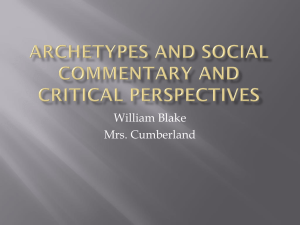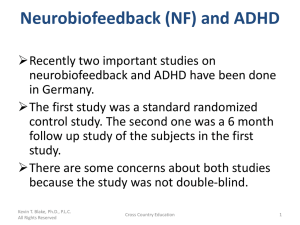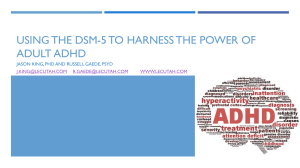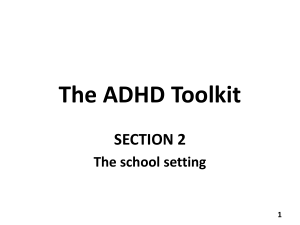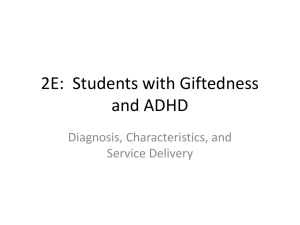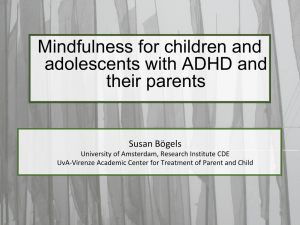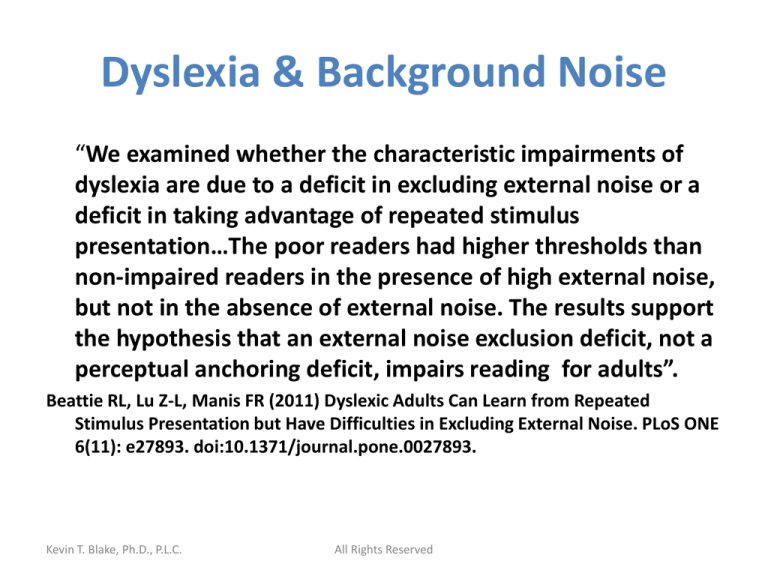
Dyslexia & Background Noise
“We examined whether the characteristic impairments of
dyslexia are due to a deficit in excluding external noise or a
deficit in taking advantage of repeated stimulus
presentation…The poor readers had higher thresholds than
non-impaired readers in the presence of high external noise,
but not in the absence of external noise. The results support
the hypothesis that an external noise exclusion deficit, not a
perceptual anchoring deficit, impairs reading for adults”.
Beattie RL, Lu Z-L, Manis FR (2011) Dyslexic Adults Can Learn from Repeated
Stimulus Presentation but Have Difficulties in Excluding External Noise. PLoS ONE
6(11): e27893. doi:10.1371/journal.pone.0027893.
Kevin T. Blake, Ph.D., P.L.C.
All Rights Reserved
Dyslexia & Phonemic/Auditory
Processing
Dyslexics appear to have difficulty in “auditory sampling, the
initial stage of processing the sound rhythms of phonemes in
the left hemisphere. Researchers found that dyslexics have a
reduced bias for phonological processing in the left
hemisphere. The researchers continued, “This deficit
correlates with measures of phonological processing and
rapid naming. We further observed enhanced cortical
entrainment at rates beyond 40 Hz in dyslexics and show
that this particularity is associated with a verbal memory
deficit. These data suggest that a single auditory anomaly,
i.e., phonemic oversampling in left auditory cortex, accounts
for three main facets of the linguistic deficit in dyslexia”. (p.
1080)
Lehongre, K., Ramus, F., Villiermet, N., Schwartz, D., Giraud, A-L. (December 22, 2011). Altered LowGamma Sampling in Auditory Cortex Accounts for the Three Main Facets of Dyslexia, Neuron,
72(6), 1080-1090.
Kevin T. Blake, Ph.D., P.L.C.
All Rights Reserved
ADHD & Tryptophan
Tryptophan uses the same transport systems in both
fibroblasts and at the blood brain barrier (BBB).
Hence, a decreased transport capacity of tryptophan
implies that less tryptophan is being transported
across the BBB in the ADHD group. This could lead to
deficient serotonin access in the brain that might
cause disturbances in both the serotonergic and the
catecholaminergic neurotransmitter systems, since
these systems are highly interconnected.
Johansson et al. (2011). Altered Tryptophan and Alanine Transport in Fibroblasts From
Boys with Attention-Deficit/Hyperactivity Disorder (ADHD): An in Vitro Study.
Behavioral and Brain Functions, 7(40), 1-7. From Website:
http://www.behavioralandbrainfunctions.com/content/7/1/40 .
Kevin T. Blake, Ph.D., P.L.C.
All Rights Reserved
ADHD & Amygdala/Frontal Lobe
“Our findings demonstrate that in adolescents with
ADHD, a neural substrate of fear processing is atypical,
as is the connectivity between the amygdala and LPFC
(lateral prefrontal cortex, sic.). These findings suggest
possible neural substrates for the emotional reactivity
that is often present in youths with ADHD, and provide
putative neural targets for the development of novel
therapeutic interventions for this condition”. (p. 828)
Posner, J. Nagel, B.J., Maia, T.V., Oh, M., Wang, Z., and Peterson, B.S. (August 2011).
Journal of the American Academy of Child & Adolescent Psychiatry, 50(8), 828837.
Kevin T. Blake, Ph.D., P.L.C.
All Rights Reserved
ADHD Girls and Boys in Social
Interaction
“Although boys and girls with ADHD experienced
difficulties in all areas, girls with ADHD, especially the
inattentive subtype, were more negatively affected in
academics and peer relationships. Inattentive girls were
less popular and more likely to be bullied than girls
without ADHD, whereas inattentive boys were not. The
social isolation experienced by many girls with ADHD
deserves greater attention”. (p. 532)
Elkins, I.J., Malone, S., Keves, M., Lacono, W.G., and McGue, M., (2011). The Impact
of Attention-Deficit/Hyperactivity Disorder on Preadolescent Ajustment May Be
Greater for Girls Than Boys. Journal of Clinical Child and Adolescent Psychology,
40(4), 532-545.
Kevin T. Blake, Ph.D., P.L.C.
All Rights Reserved
AD/HD and Developmental
Coordination Disorder (DCD)
“Significantly poorer perceptual reasoning
ability was seen in DCD and ADHD+DCD groups
but not in the ADHD group. The findings provide
evidence that a deficit in visuo-spatial ability
may underlie DCD but not ADHD. These findings
revealed different cognitive profiles for ADHD
and/or DCD, thus the current study does not
lend support to the common aetiology
hypothesis in understanding the basis of ADHD
and DCD comorbidity”. (p. 1260).
Loh, P.R., Piek, J.P., and Barret, N.C. (2011). Comorbid ADHD and DCD: Examining
Cognitive Functions Using the WISC-IV. Research in Developmental Disabilities, 32(4),
1260-1269.
Kevin T. Blake, Ph.D., P.L.C.
All Rights Reserved
Stages of Memory
“Memory is a three stage process: First come
the learning or encoding of the experience;
then the storage or consolidation of the
information over many hours, days and
months; and last, the retrieval of that
memory when you later retrieve it”. (p. 27)
Chen, I. (January/February, 2012). A Feeling for The Past. Scientific American
Mind, 22(6), 24-31.
Kevin T. Blake, Ph.D., P.L.C.
All Rights Reserved
Memory and Fear
“…the amydgala, a structure buried deep within
the brain, orchestrates the memory-boosting
effects of fear. For instance, if you suddenly
glimpse a snake…your amygdala instantly
reacts…this region signals your cortex to boost
its visual and perceptual processing to confirm
that the snake is real directing your attention to
it. Second the amygdala triggers the release of
stress hormones that set you heart racing and
pupils dilating…”
Kevin T. Blake, Ph.D., P.L.C.
All Rights Reserved
Memory and Fear
“…The same hormones spur the hippocampus,
the memory encoding center to start storing or
consolidating your perceptions into a neural
record. Over the long run, sensory details of the
memory are believed to migrate into areas of
the cortex for vision, hearing and movement.
Later, when you remember the snake, the
amygdala and hippocampus are again involved,
reintegrating the emotional and sensory
dimensions of the memory”. (p. 27)
Chen, I. (January/February, 2012). A Feeling for The Past. Scientific
American Mind, 22(6), 24-31.
Kevin T. Blake, Ph.D., P.L.C.
All Rights Reserved
More About Memory
• Memory can also be paired with the pleasure
centers of the brain so it will be recalled a
pleasant event.
• When you sleep your brain makes calculations
about what you want to remember and forget.
• Sleep will often cause emotionally laden
memories to be amplified. However, during sleep
stress hormones are not secreted and the brain
can make decisions of what to remember and
forget without the emotional component.
Chen, I. (January/February, 2012). A Feeling for The Past. Scientific American
Mind, 22(6), 24-31.
Kevin T. Blake, Ph.D., P.L.C.
All Rights Reserved
More About Memory
One can tone down negative feeling about an
emotional memory and enhance the accuracy
of the memory by cognitive reappraisal. A
cognitive behavioral technique to reframe the
event.
Chen, I. (January/February, 2012). A Feeling for The Past. Scientific American
Mind, 22(6), 24-31.
Kevin T. Blake, Ph.D., P.L.C.
All Rights Reserved
The Gift of Forgetting
“In recent years researchers have amassed
evidence for our ability to willfully
forget…New evidence suggests that the
ability to repress is quite useful. Those who
cannot do this well tend to let their thoughts
stick in their mind. They ruminate, which can
pave a path to depression. Weak restraints
on memory may similarly impede the
recovery of trauma victims. Lacking breaks on
mental…”
Kevin T. Blake, Ph.D., P.L.C.
All Rights Reserved
The Gift of Forgetting
“…intrusions, individuals with attentiondeficit/hyperactivity disorder (ADHD) are
more likely to be among the forgetless (to
coin a term). In short, memory—and
forgetting—can shape your personality”. (p.
34).
Wickelgren, I. (2012). Trying To Forget. Scientific American Mind, 22(6), p. 32-39.
Kevin T. Blake, Ph.D., P.L.C.
All Rights Reserved
Actively Forgetting
“…the researchers associated memory
suppression with greater activity in two regions
of the prefrontal cortex—the aforementioned
region devoted to planning and oversight—and
diminished activity in the hippocampus, an area
responsible for both binding components of a
memory together and reactivating it…Items that
were later remembered produced more activity
in the hippocampus than did items that would
be forgotten, a pattern that forecast which pairs
were successfully suppressed…”
Kevin T. Blake, Ph.D., P.L.C.
All Rights Reserved
Actively Forgetting
“…Meanwhile the engagement of the
prefrontal cortex foretold the likelihood of
forgetting in an individual: more activation
meant more inhibitory power”. (pp. 35-36)
Wickelgren, I. (2012). Trying To Forget. Scientific American Mind, 22(6), p.
32-39.
Kevin T. Blake, Ph.D., P.L.C.
All Rights Reserved
Actively Forgetting
• There is some evidence that people are
better at repressing emotional memories
than neutral ones.
Wickelgren, I. (2012). Trying To Forget. Scientific American Mind, 22(6), p.
32-39.
Kevin T. Blake, Ph.D., P.L.C.
All Rights Reserved
AD/HD and Active Forgetting
• ADHD people appear to have more difficulty
actively forgetting than the non-impaired
because their prefrontal cortex is under
activated when forgetting. Hence, their
amygdali and hippocampus’ are not blocked
and record the memories. Thus they have less
control of their memories. As a result, they are
more susceptible to distracting thoughts.
Wickelgren, I. (2012). Trying To Forget. Scientific American Mind, 22(6), p.
32-39.
Kevin T. Blake, Ph.D., P.L.C.
All Rights Reserved
Erasing Memories
• “…Research now suggests that reminding a
person of something makes that recollection
temporarily revert to an insecure state, in
which it can be modified, even erased”. (p.
42)
• New medication may be able to block or
modify memories of past trauma.
Piore, A. (January/February, 2012). Totaling Recall. Scientific American
Mind, 22(6), 40-45.
Kevin T. Blake, Ph.D., P.L.C.
All Rights Reserved
More on Sluggish Cognitive Tempo (SCT)
“Confirmatory factor analyses (CFA) supported the
presence of three separate, but correlated factors (SCT,
inattention, and hyperactivity/impulsivity) in both parent
and teacher ratings. As expected, SCT symptoms were
greatest in youth with ADHD Inattentive type, but were
also found in non-ADHD clinical groups. SCT symptoms
were related to inattention, internalizing, and social
problems across both parent and teacher informants; for
parent reports, SCT was also related to more externalizing
problems. Findings support the statistical validity of the
SCT construct, but its clinical utility is still unclear” (p.
1097).
Garner, A.A., Marceaaux, S.M., Patterson, C.,andHodges, B., (November 2010). Dimentions and Coorelates of
Attention Deficit Hyperactivity Disorder and Sluggish Cognitive Tempo.. Journal of Abnormal Child
Psychology, 38(8), 1097-1107.
Kevin T. Blake, Ph.D., P.L.C.
All Rights Reserved
Sluggish Cognitive Tempo
“Children with the truly inattentive type of ADHD, rather
than being distractible, may instead be easily bored, their
problem being more in motivation (under-arousal) than in
inhibitory control. Much converging evidence points to a
primary disturbance in the striatum (a frontal–striatal
loop) in the combined type of ADHD. It is proposed here
that the primary disturbance in truly inattentive-type
ADHD (ADD) is in the cortex (a frontal–parietal loop).
Finally, it is posited that these are not two different types
of ADHD, but two different disorders with different
cognitive and behavioral profiles, different patterns of
comorbidities, different responses to medication, and
different underlying neurobiologies.
Diamond, A. (2005). Attention-deficit disorder (attention-deficit/hyperactivity disorder without
hyperactivity): A neurobiologically and behaviorally distinct disorder from attentiondeficit/hyperactivity disorder (with hyperactivity). Developmental Psychopathology, 17(3),
805-825.
Kevin T. Blake, Ph.D., P.L.C.
All Rights Reserved
ASD Prevalence
“More people than ever before are being
diagnosed with an ASD. It is unclear how much
of this increase is due to a broader definition of
ASDs and better efforts in diagnosis. However, a
true increase in the number of people with an
ASD cannot be ruled out. We believe the
increase in ASD diagnosis is likely due to a
combination of these factors”.
Centers for Disease Control and Prevention(June 12, 2012). Autism Spectrum Disorders:
Research. From website: http://www.cdc.gov/ncbddd/autism/research.html.
Kevin T. Blake, Ph.D., P.L.C.
All Rights Reserved
ASD, Vaccines & The CDC
“Many studies have looked at
whether there is a
relationship between vaccines
and autism spectrum
disorders (ASDs)”.
Centers for Disease Control and Prevention(June 12, 2012). Autism Spectrum
Disorders: Research. From website:
http://www.cdc.gov/ncbddd/autism/research.html.
Kevin T. Blake, Ph.D., P.L.C.
All Rights Reserved
Medical Test for ADHD?
“Many high-prevalence neurological disorders involve
dysfunctions of oculomotor control and attention, including
attention deficit hyperactivity disorder (ADHD), fetal alcohol
spectrum disorder (FASD), and Parkinson’s disease (PD). Previous
studies have examined these deficits with clinical neurological
evaluation, structured behavioral tasks, and neuroimaging. Yet,
time and monetary costs prevent deploying these evaluations to
large at-risk populations, which is critically important for earlier
detection and better treatment. We devised a high-throughput,
low-cost method where participants simply watched television
while we recorded their eye movements. We combined eyetracking data from patients and controls with a computational
model of visual attention to extract 224 quantitative features.
Using machine learning in a workflow inspired by microarray
analysis, we identified critical features that differentiate patients
from control subjects…”
Kevin T. Blake, Ph.D., P.L.C.
All Rights Reserved
Medical Test for ADHD? (Continued)
“…With eye movement traces recorded from only 15 min
of videos, we classified PD versus age-matched controls
with 89.6 % accuracy (chance 63.2 %), and ADHD versus
FASD versus control children with 77.3 % accuracy (chance
40.4 %). Our technique provides new quantitative insights
into which aspects of attention and gaze control are
affected by specific disorders. There is considerable
promise in using this approach as a potential screening
tool that is easily deployed, low-cost, and high-throughput
for clinical disorders, especially in young children and
elderly populations who may be less compliant to
traditional evaluation tests”.
Tseng, P.-H., Cameron, I.G.M., Pari, G., Reynolds, J.N., Munoz, D.P., Itti, L. (August,
2012).High-Throughput Classification of Clinical Populations From Natural
Viewing Eye Movements. Journal of Neurology, DOI: 10.1007/s00415-012-6631-2.
Kevin T. Blake, Ph.D., P.L.C.
All Rights Reserved

